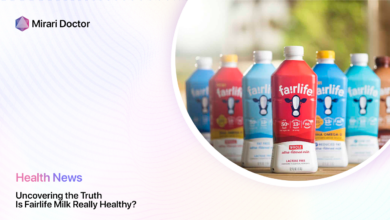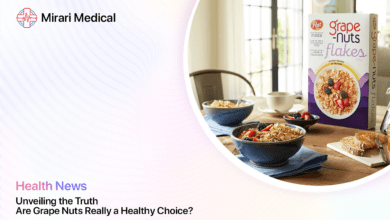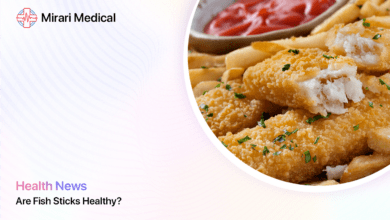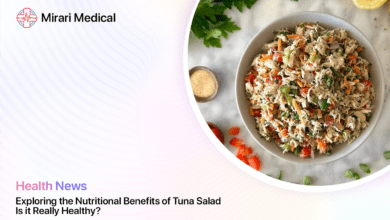Uncovering the Truth: Are Wasabi Peas Really Healthy?
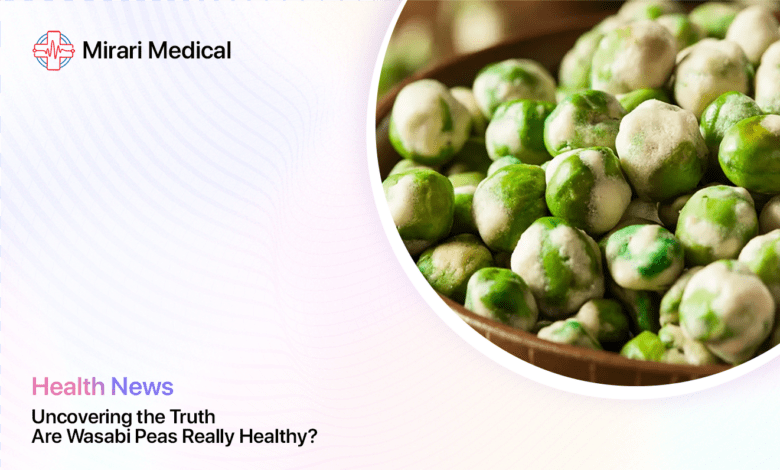
You may be interested
Did you know that the global savory snacks market is projected to reach $220.7 billion by 2026?[1] Among the vast array of snack options available, one unique and flavorful choice that has gained popularity in recent years is wasabi peas. These small green morsels pack a powerful punch of heat and are often touted as a healthier alternative to other processed snacks. But are wasabi peas truly as nutritious as they claim to be? In this comprehensive guide, we’ll dive deep into the world of wasabi peas, examining their nutritional profile, potential health benefits, and any risks or side effects associated with consuming them. By the end, you’ll have a clear understanding of whether these fiery little peas deserve a place in your healthy snacking repertoire.
What Are Wasabi Peas?
Wasabi peas are a crunchy, spicy snack made from dehydrated green peas that are coated in a mixture of wasabi powder, oil, and salt. Wasabi, also known as Japanese horseradish, is a plant native to Japan that is commonly used as a condiment in Japanese cuisine. The root of the wasabi plant is grated into a paste and mixed with other ingredients to create the signature spicy flavor found in wasabi peas.
The process of making wasabi peas involves first soaking and then roasting green peas until they become crispy. The roasted peas are then coated in a blend of wasabi powder, oil, and salt to give them their distinctive taste and bright green color. Some brands may also add other flavorings such as soy sauce, sugar, or sesame oil to enhance the overall taste profile.
Wasabi peas have gained popularity as a snack food in recent years, particularly among those seeking healthier alternatives to traditional processed snacks like potato chips or pretzels. They are often marketed as a gluten-free, vegan, and protein-rich snack option. However, as with any processed food, it’s important to examine the nutritional content and potential health impacts more closely before making them a regular part of your diet.
What Are the Nutritional Values of Wasabi Peas?
To determine whether wasabi peas are a healthy snack choice, let’s take a closer look at their nutritional profile. A typical serving size of wasabi peas is about 28 grams or 1 ounce. Here’s what you can expect to find in a single serving[2]:
| Nutrient | Amount per 28g serving |
|---|---|
| Calories | 130 |
| Total Fat | 4.5g |
| Saturated Fat | 0.5g |
| Trans Fat | 0g |
| Cholesterol | 0mg |
| Sodium | 210mg |
| Total Carbohydrate | 18g |
| Dietary Fiber | 3g |
| Sugars | 1g |
| Protein | 5g |
As you can see, wasabi peas are relatively low in calories, with a single serving providing around 130 calories. They are also a good source of plant-based protein, with 5 grams per serving, making them a potentially appealing option for those following vegetarian or vegan diets.
One of the standout nutritional benefits of wasabi peas is their fiber content. A single serving provides 3 grams of dietary fiber, which is approximately 12% of the recommended daily value. Fiber is an important nutrient that aids in digestion, promotes feelings of fullness, and helps to regulate blood sugar levels.
However, it’s worth noting that wasabi peas are relatively high in sodium, with a single serving containing 210mg or roughly 9% of the daily recommended limit. Excessive sodium intake can contribute to high blood pressure and other health issues, so it’s important to be mindful of portion sizes and to consider the sodium content of any other foods you are consuming alongside wasabi peas.
While wasabi peas do offer some nutritional benefits, they should still be considered a processed snack food and consumed in moderation as part of a balanced diet. It’s always best to prioritize whole, minimally processed foods as the foundation of a healthy eating pattern.
What Are the Health Benefits of Wasabi Peas?
Now that we have a better understanding of the nutritional profile of wasabi peas, let’s explore some of the potential health benefits associated with consuming them.
1. High in Fiber
As mentioned earlier, wasabi peas are a good source of dietary fiber, providing 3 grams per 1-ounce serving. Fiber is a crucial nutrient that offers numerous health benefits, including:
- Promoting regular bowel movements and preventing constipation
- Supporting the growth of beneficial gut bacteria
- Helping to maintain healthy blood sugar levels by slowing the absorption of glucose
- Reducing the risk of certain chronic diseases such as type 2 diabetes, heart disease, and certain cancers
Incorporating fiber-rich foods like wasabi peas into your diet can help you meet the recommended daily intake of 25-38 grams of fiber per day, depending on your age and sex[3].
2. Rich in Vitamins and Minerals
In addition to their fiber content, wasabi peas also offer a range of essential vitamins and minerals. Some of the key nutrients found in wasabi peas include:
- Manganese: This mineral plays a role in bone health, wound healing, and metabolism.
- Copper: Copper is important for maintaining healthy blood vessels, nerves, and immune function.
- Thiamin (Vitamin B1): This B vitamin is crucial for energy metabolism and proper nervous system function.
- Vitamin K: Essential for blood clotting and bone health.
While wasabi peas should not be relied upon as the sole source of these nutrients, they can certainly contribute to an overall balanced and nutrient-rich diet.
3. Low in Calories
For those watching their calorie intake, wasabi peas can be an appealing snack option. With around 130 calories per 1-ounce serving, they are relatively low in calories compared to many other processed snacks like chips or crackers. This makes them a potentially helpful choice for those trying to manage their weight or maintain a calorie deficit.
However, it’s important to remember that wasabi peas are often consumed mindlessly and in larger portions than the recommended serving size. Overeating any snack food, even those that are relatively low in calories, can still contribute to excess calorie intake and potential weight gain over time.
4. May Help with Weight Loss
In addition to being low in calories, the fiber and protein content of wasabi peas may also support weight loss efforts. Fiber and protein are both known to promote feelings of fullness and satiety, which can help to reduce overall calorie intake and prevent overeating.
A study published in the Journal of Nutrition found that increasing fiber intake by 14 grams per day was associated with a 10% decrease in calorie intake and a 4.2-pound weight loss over a 4-month period, without making any other dietary changes[4]. While wasabi peas alone are unlikely to lead to significant weight loss, incorporating them as part of a balanced, fiber-rich diet may support weight management goals.
It’s worth noting that the potential weight loss benefits of wasabi peas are likely due to their nutrient content rather than any specific properties of the wasabi itself. More research is needed to fully understand the impact of wasabi on weight management.
Are There Any Risks or Side Effects of Consuming Wasabi Peas?
While wasabi peas do offer some potential health benefits, there are also a few risks and side effects to be aware of when consuming them.
1. High Sodium Content
One of the main concerns with wasabi peas is their high sodium content. A single 1-ounce serving contains 210mg of sodium, which is roughly 9% of the recommended daily limit of 2300mg. Consuming too much sodium can contribute to high blood pressure, a major risk factor for heart disease and stroke.
If you have been advised by a healthcare professional to follow a low-sodium diet, you may need to limit your intake of wasabi peas or opt for a lower-sodium alternative. It’s also important to be mindful of the sodium content in any other foods you are consuming alongside wasabi peas to ensure you are not exceeding your recommended daily limit.
2. Potential Allergies
Another potential risk to consider with wasabi peas is the possibility of allergic reactions. While allergies to green peas themselves are relatively rare, some individuals may be sensitive to other ingredients used in the processing of wasabi peas, such as soy or sesame oil.
Symptoms of a food allergy can range from mild (such as hives or itching) to severe (such as difficulty breathing or anaphylaxis). If you have a known allergy to any of the ingredients commonly found in wasabi peas, it’s best to avoid them altogether. If you experience any symptoms of an allergic reaction after consuming wasabi peas, seek medical attention immediately.
3. May Cause Digestive Issues
For some individuals, the high fiber content of wasabi peas may cause digestive issues such as bloating, gas, or diarrhea, particularly if they are not used to consuming a high-fiber diet. Increasing your fiber intake too quickly can lead to gastrointestinal discomfort, so it’s best to do so gradually and with plenty of water to help the fiber pass through your digestive system more easily.
Additionally, some people may find that the spicy heat of the wasabi in wasabi peas irritates their digestive tract, leading to discomfort or even heartburn. If you have a sensitive stomach or are prone to digestive issues, you may want to limit your intake of wasabi peas or opt for a milder snack alternative.
As with any food, it’s important to listen to your body and pay attention to any adverse reactions you may experience after consuming wasabi peas. If you find that they consistently cause digestive discomfort or other unpleasant symptoms, it may be best to avoid them or consume them in smaller amounts.
How Should Wasabi Peas Be Consumed for Optimal Health Benefits?
If you do choose to incorporate wasabi peas into your diet, there are a few tips to keep in mind to maximize their potential health benefits and minimize any risks or side effects.
- Practice portion control: While wasabi peas are relatively low in calories compared to some other snack foods, it’s still important to be mindful of portion sizes. Stick to the recommended serving size of 1 ounce (about 28 grams) to avoid overeating and to keep your sodium intake in check.
- Pair with other nutrient-dense foods: To create a more balanced and satisfying snack, consider pairing wasabi peas with other nutrient-dense foods such as fresh vegetables, hummus, or a small handful of unsalted nuts. This can help to increase the overall nutrient content of your snack and may help to promote feelings of fullness and satiety.
- Choose lower-sodium options when possible: If you are concerned about the sodium content of wasabi peas, look for brands that offer lower-sodium varieties. You can also try making your own wasabi peas at home using dried green peas, wasabi powder, and a minimal amount of salt to better control the sodium content.
- Stay hydrated: The high fiber content of wasabi peas can help to promote digestive health, but it’s important to drink plenty of water to help the fiber pass through your system more easily. Aim for at least 8 cups (64 ounces) of water per day, and more if you are consuming a high-fiber diet.
- Consume in moderation: As with any processed snack food, it’s best to consume wasabi peas in moderation as part of an overall balanced diet. While they do offer some nutritional benefits, they should not be relied upon as a primary source of nutrients. Focus on incorporating a variety of whole, minimally processed foods into your diet for optimal health.
By following these tips and being mindful of portion sizes and frequency of consumption, you can enjoy wasabi peas as a tasty and potentially nutritious snack option. However, it’s always important to listen to your body and make dietary choices that work best for your individual needs and health goals.
Are There Any Healthier Alternatives to Wasabi Peas?
While wasabi peas can be a tasty and potentially nutritious snack option, they may not be the best choice for everyone. If you are looking for healthier alternatives that offer similar flavors or nutritional benefits, here are a few options to consider:
1. Fresh Wasabi
If you enjoy the spicy kick of wasabi but want to avoid the processed nature of wasabi peas, consider using fresh wasabi instead. Fresh wasabi root can be grated and used as a condiment for sushi, sashimi, or other dishes. While it may be more difficult to find and more expensive than wasabi powder or paste, fresh wasabi offers a more potent and complex flavor profile.
2. Green Peas
For a simpler and less processed alternative to wasabi peas, try snacking on plain green peas instead. Fresh or frozen green peas can be steamed or boiled and enjoyed as a side dish or snack. They offer a similar nutrient profile to wasabi peas, including fiber, protein, and various vitamins and minerals, without the added sodium or processing.
3. Edamame
Edamame, or immature soybeans, are another nutritious and satisfying snack option. Like wasabi peas, edamame are a good source of plant-based protein and fiber. They can be enjoyed steamed or boiled, either in the pod or shelled, and are often served with a sprinkle of salt or other seasonings.
4. Roasted Chickpeas
For a crunchy and flavorful snack that packs a nutritional punch, try roasted chickpeas. Drain and rinse a can of chickpeas, pat them dry, and toss with a little oil and your favorite seasonings (such as cumin, paprika, or garlic powder). Roast in a preheated oven until crispy and golden brown. Like wasabi peas, roasted chickpeas offer protein, fiber, and various vitamins and minerals.
5. Air-Popped Popcorn
If you are craving a crunchy and satisfying snack that is lower in calories and sodium than wasabi peas, air-popped popcorn may be a good choice. Air-popped popcorn is a whole grain that is naturally low in calories and high in fiber. You can flavor it with a variety of seasonings, such as herbs, spices, or nutritional yeast, to suit your taste preferences.
Remember, the healthiest snack options are typically those that are minimally processed, nutrient-dense, and consumed in appropriate portion sizes. By focusing on whole foods and listening to your body’s hunger and fullness cues, you can make snack choices that support your overall health and well-being.
Takeaways
- Wasabi peas are a crunchy, spicy snack made from roasted green peas coated in wasabi powder, oil, and salt.
- They are relatively low in calories and high in fiber and plant-based protein compared to some other processed snacks.
- Wasabi peas also offer various vitamins and minerals, including manganese, copper, thiamin, and vitamin K.
- However, they are high in sodium, with a single serving providing 9% of the recommended daily limit.
- Some individuals may experience allergic reactions or digestive issues after consuming wasabi peas, particularly if they are sensitive to spicy foods or have a history of gastrointestinal problems.
- To maximize the potential health benefits of wasabi peas, it’s important to practice portion control, pair them with other nutrient-dense foods, choose lower-sodium options when possible, stay hydrated, and consume them in moderation as part of a balanced diet.
- For those looking for healthier alternatives to wasabi peas, options include fresh wasabi, plain green peas, edamame, roasted chickpeas, and air-popped popcorn.
FAQs
Are wasabi peas gluten-free?
Yes, most brands of wasabi peas are naturally gluten-free, as they are made from green peas and wasabi powder. However, it’s always a good idea to check the label or contact the manufacturer to confirm, as some brands may use additional ingredients that contain gluten.
Can wasabi peas help with weight loss?
While wasabi peas are relatively low in calories and high in fiber and protein, which may support weight loss efforts, they are not a magic bullet for weight loss. Consuming them in excess or as part of an otherwise unhealthy diet is unlikely to lead to significant weight loss results. As with any food, it’s important to consume wasabi peas in moderation as part of a balanced and calorie-controlled diet for optimal weight management.
Are wasabi peas safe for pregnant women to consume?
In general, wasabi peas are safe for pregnant women to consume in moderation as part of a balanced diet. However, some pregnant women may be more sensitive to spicy foods or may experience heartburn or other digestive issues after consuming wasabi peas. As with any dietary concerns during pregnancy, it’s best to consult with a healthcare provider for personalized guidance.
Can wasabi peas be part of a keto diet?
Wasabi peas can be incorporated into a keto diet in moderation, as they are relatively low in carbohydrates compared to some other snack foods. A single 1-ounce serving of wasabi peas contains around 18 grams of total carbohydrates, with 3 grams of fiber. However, it’s important to be mindful of portion sizes and to factor in the carbohydrate content of wasabi peas when planning your overall daily carbohydrate intake on a keto diet.
How should wasabi peas be stored to maintain freshness?
To keep wasabi peas fresh and crunchy, store them in an airtight container at room temperature, away from direct sunlight or heat sources. Properly stored, they should maintain their quality for several weeks to a few months. If you notice any signs of spoilage, such as off odors, flavors, or textures, it’s best to discard them.
In conclusion, wasabi peas can be a tasty and potentially nutritious snack option for some individuals, offering benefits such as fiber, plant-based protein, and various vitamins and minerals. However, they are also relatively high in sodium and may not be suitable for everyone, particularly those with allergies, sensitivities, or certain health conditions. As with any food, it’s important to consume wasabi peas in moderation as part of a balanced and varied diet, and to listen to your body’s individual needs and responses. By making informed and mindful snack choices, you can support your overall health and well-being while still enjoying the flavors and textures you crave.
References
- Statista. (2021). Savory Snacks – worldwide: Statista Market Forecast. https://www.statista.com/outlook/cmo/food/confectionery-snacks/savory-snacks/worldwide
- USDA FoodData Central. (2019). Snacks, peas, roasted, wasabi-flavored. https://fdc.nal.usda.gov/fdc-app.html#/food-details/168192/nutrients
- Academy of Nutrition and Dietetics. (2021). Easy Ways to Boost Fiber in Your Daily Diet. https://www.eatright.org/food/vitamins-and-supplements/types-of-vitamins-and-nutrients/easy-ways-to-boost-fiber-in-your-daily-diet
- Howarth, N. C., Saltzman, E., & Roberts, S. B. (2001). Dietary fiber and weight regulation. Nutrition Reviews, 59(5), 129–139. https://doi.org/10.1111/j.1753-4887.2001.tb07001.x
Your trusted source for health info, offering expert advice, news, and tips to stay healthy and informed.

